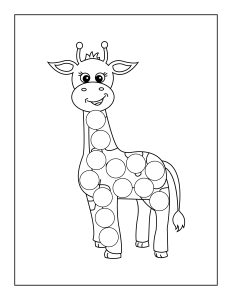 Dot coloring or dab coloring is a simple colouring activity, where toddlers and children fill in pre-drawn dots or circles with colour to make pictures. It has gained popularity not only for toddlers who can proudly show off their beautiful artwork but also for seniors with dementia. It is a basic activity but shows profound benefits for both groups offering both developmental and therapeutic value.
Dot coloring or dab coloring is a simple colouring activity, where toddlers and children fill in pre-drawn dots or circles with colour to make pictures. It has gained popularity not only for toddlers who can proudly show off their beautiful artwork but also for seniors with dementia. It is a basic activity but shows profound benefits for both groups offering both developmental and therapeutic value.
The Appeal of Dot Coloring for Toddlers
For toddlers, dot coloring serves as an excellent introduction to the world of art and creativity. The simplicity of the task—filling in a dot with color—makes it an accessible way for young children to express themselves while developing crucial motor skills. Of course, toddlers do not need a pre drawn picture to be able to use dab coloring markers nor even to share the fun with siblings or friends. Here are some of the benefits of dot coloring for toddlers: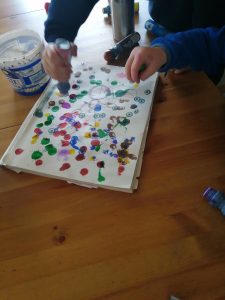
Developing Fine Motor Skills
Dot coloring requires toddlers to focus on precise movements as they fill in small circles, helping to improve hand-eye coordination and fine motor skills. These are essential for other tasks they will encounter as they grow, such as writing and using utensils.
Encouraging Focus and Concentration
While toddlers are often bursting with energy, dot coloring provides a structured activity that encourages them to sit down and concentrate. Completing a page of dots can offer a sense of achievement, boosting their confidence.
Learning Colors and Patterns
As toddlers select different colors to fill in the dots, they begin to recognize and name colors, an essential part of early learning. Some dot coloring pages feature patterns, which can help toddlers learn to identify sequences and develop pattern recognition skills.
Stimulating Creativity
Though the activity is structured, dot coloring still allows for creativity. Children can choose colors according to their preferences, mix different hues, and even go beyond the lines if they wish. This freedom within structure helps to foster a love of creativity and art from a young age.
This article contains affiliate links. I am an Amazon affiliate and if you purchase from there, I will make a small commission at no charge to you.
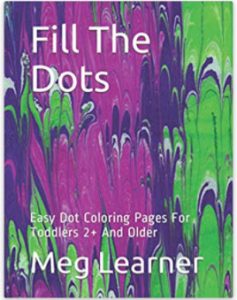
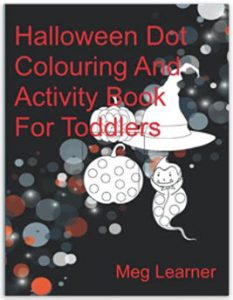
Buy from UK
Buy from US
Seniors and Others With Dementia or Cognitive Problems
Benefits of Dot Coloring for Seniors with Dementia
For seniors with dementia, dot coloring serves as a therapeutic activity that can enhance cognitive function, reduce anxiety, and provide a soothing routine. The structured nature of the task, combined with the creative expression it allows, makes it a particularly effective tool in dementia care.
Cognitive Stimulation
Engaging in dot coloring requires focus and decision-making, which can help stimulate cognitive functions in seniors with dementia. While the task itself is simple, the act of selecting colors and filling in dots encourages brain activity and can help slow the progression of cognitive decline.
Reducing Anxiety and Stress
Many seniors with dementia experience anxiety and agitation. Dot coloring offers a calming, meditative activity that can help soothe these feelings. The repetitive nature of filling in dots can create a sense of order and predictability, which is comforting for those with dementia.
Enhancing Motor Skills
Similar to toddlers, seniors with dementia can benefit from the motor skills practice that dot coloring provides. The fine motor control required can help maintain dexterity and coordination, which are often affected by aging and cognitive decline.
Encouraging Social Interaction
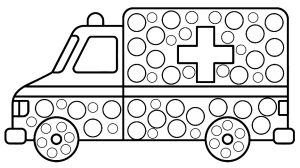 Dot coloring can also serve as a social activity, where seniors work alongside caregivers or other residents in group settings. This interaction can help combat the isolation often felt by those with dementia and promote a sense of community. Where the dot pictures are of vintage items, they can promote conversations about the past.
Dot coloring can also serve as a social activity, where seniors work alongside caregivers or other residents in group settings. This interaction can help combat the isolation often felt by those with dementia and promote a sense of community. Where the dot pictures are of vintage items, they can promote conversations about the past.
Creating a Sense of Accomplishment
Completing a dot coloring page provides a tangible result that can boost self-esteem in seniors. The sense of accomplishment that comes from finishing a task, no matter how simple, can be incredibly uplifting, especially for those who struggle with memory loss.
Practical Tips for Implementing Dot Coloring
Whether you’re introducing dot coloring to toddlers or seniors with dementia, here are some tips to make the most of the activity:
Choose Age-Appropriate Materials
For toddlers, opt for larger dots and bright, non-toxic markers or crayons. For seniors, select dot coloring books with larger, easily visible dots and consider using markers or pencils that are comfortable to grip.
Create a Relaxing Environment
Ensure the space is quiet and free from distractions. Play soft music in the background to enhance the calming effect of the activity.
Encourage, Don’t Instruct
Let participants choose their colors and work at their own pace. The goal is not perfection but rather engagement and enjoyment.
Incorporate Themes
For both toddlers and seniors, themed dot coloring pages—such as nature, animals, or holidays—can add an element of fun and relevance to the activity.
Make It a Routine
Consistency can be particularly beneficial for seniors with dementia. Incorporating dot coloring into a daily or weekly routine can provide structure and something to look forward to.
Conclusion
Dot coloring is more than just a simple pastime; it is a valuable activity that offers developmental benefits for toddlers and therapeutic benefits for seniors with dementia. By integrating dot coloring into the lives of these individuals, caregivers and educators can foster creativity, enhance motor skills, and provide a sense of accomplishment that contributes to overall well-being. Whether young or old, participants in dot coloring are engaging in a meaningful activity that enriches their lives in subtle yet significant ways.